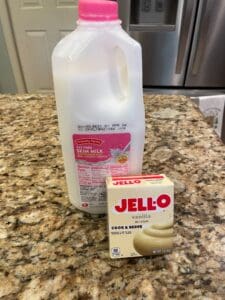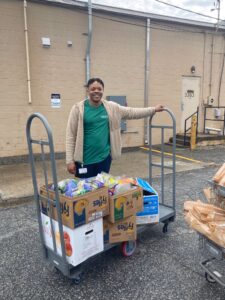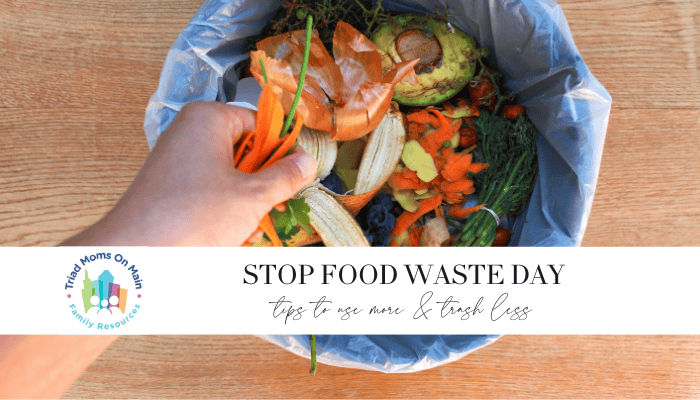By Guest Blogger Leslie Loyd
Most families are eager to save a little money — and cutting food waste at home is one way to do it. If your family is like most, throwing away excess food is a daily occurrence. In fact, the USDA estimates that up to 40% of our food is wasted. Food waste costs the average household about $1,800 per year. Shocked? Keep reading to find out how to put some of that money back in your pocket.
Wednesday, April 24, is Stop Food Waste Day, so it’s the perfect day to start some new habits for wasting less food at home.
Start with the kids

Children can be the source of a fair amount of wasted food. Once you get them thinking about cutting food waste, you’ll be well on the way to significant savings.
- See for yourself. Pick a weekend, and instead of scraping wasted food into the trash, scrape it into a plastic container. On Sunday night take a look to see how much food is in the container; if you have a kitchen scale, weigh it. Having that visual will help everyone realize how much food is being wasted. Then follow up by brainstorming with your family what might decrease food waste at home, such as serving smaller portion sizes, prioritizing the use of leftovers, and scaling down recipes so you don’t overcook.
- Serve—and save—small portions. A child may need to try a new food multiple times before they decide they like it. Save yourself some frustration and waste by allowing them to take a tiny taste of anything new. As you clean up after dinner, save even small leftover portions. For example, you can use your child’s half-glass of milk in their morning cereal or mix their leftover fruit into your morning smoothie.
- Look in the lunchboxes. Save the Food offers this great tip: Ask your children to bring home their lunchbox leftovers instead of tossing them in the trash. You might be surprised at how much—or how little—is actually being eaten, giving you a chance to make adjustments and cut waste.
- Decode the date labels. Date labels on food cause confusion, leading us to discard food that’s still perfectly good. According to Save the Food, most food expiration dates aren’t related to food safety, they’re related to food quality. Here’s what the USDA says about date labels:
-
- A “Best if Used By/Before” date indicates when a product will be of best flavor or quality. It is not a purchase or safety date.
- A “Sell-By” date tells the store how long to display the product for sale for inventory management. It is not a safe date.
- A “Use-By” date is the last date recommended for the use of the product while at peak quality. It is not a safety date except for when used on infant formula.
- A “Freeze-By” date indicates when a product should be frozen to maintain peak quality. It is not a purchase or safety date.
The sooner you and your family discover the true meaning of date labels, the more money you’ll save. That said, of course you’ll need to use common sense too. If food has been left in a hot car or on the counter it can go bad well before the date on the package. Safety first!
Most-wasted foods—and how to save them
Check out these ideas for using up the foods most likely to hit the trash. They were recently suggested and tested by A Simple Gesture staff members.
- Potatoes—Restaurants often load your plate with french fries. If you don’t want to eat them all and don’t want to throw them away, bring them home. Chop them up to make a variation on hash browns, mix them with eggs and cheese for a delicious omelet, or put them in the air fryer to reheat them, crispy as ever. Check out this recipe.
- Bread—Do you have bagels that are about to go stale? Turn them into bagel crisps or make a bagel casserole. They’re both delicious! If you have plain bread that needs to be used, cut it into cubes, season it, and pop it in the air fryer to make croutons. Yum!
- Milk—Did you know that if you heat milk that’s starting to go bad, it’ll kill the bacteria and make the milk usable in cooking? It’s true! Sounds like the perfect excuse to whip up a batch of pudding. Or use the milk as is and make sour milk pancakes or biscuits. Many don’t know that you can even freeze milk. The consistency might not be quite the same for drinking, but you can thaw it and cook with it.
- Produce—Apples with some age on them are great when you slice them up, saute them, and serve them on pork chops, ice cream, or biscuits. Everyone knows that bananas going brown make the best banana bread, but if you don’t have time for that make a two-ingredient delicious and nutritious banana pancake.

My favorite websites and apps for finding creative ways to quickly use food before it goes bad include the Eat or Toss website, My Fridge Food, and Super Cook. You’ll be amazed at all of the creative and delicious ideas for using food you might otherwise toss.
If you end up with a situation in which you simply have excess food you can’t use, consider donating it to a community fridge. In Greensboro there are two community fridges, one at Prince of Peace Lutheran Church, located at 1100 Curtis St., and a second fridge at the East White Oak Community Center, located at 1801 10th St. The Instacart order that was delivered to the wrong address, the extra hot dog buns from last weekend’s cookout, and the unopened gallon of milk that’s in your fridge right before vacation are all welcome additions to the community fridge.

Businesses play their part as well

Food waste doesn’t just happen at home. If you work in food service, own a restaurant or a business involving food, or are otherwise affiliated with the food industry, these tips can help you save money and waste less at work, too. The local nonprofit A Simple Gesture has a food recovery program. Available in Guilford County, this free service picks up excess perishable food from businesses and delivers it to vetted nonprofit organizations serving meals to the community or to clients.
For example, if you cater and know you‘ll have extra food after an event, contact A Simple Gesture to schedule a pickup. That excess food will be put to good use! Dozens of area businesses already participate—Food Lion, Sprouts, Aldi, Sheetz, Whole Foods, Lowe’s Foods, Bruegger’s Bagels, Plain & Fancy Catering, City Barbeque, Syngenta, and River Landing, to name a few. To learn more or to find out how your business can participate, click here to contact our food recovery program. A Simple Gesture Food Recovery is handled by trained volunteers who pick up excess food seven days a week.
Some other great reasons to stop food waste:
- 8% of all greenhouse gas emissions result from food waste.
- Households account for 39% of the food waste in the United States–more than restaurants, grocery stores, or farms.
- If we recovered just one-fourth of the food wasted globally, we could feed all of the world’s undernourished people.
- Over 20% of the contents of our landfills is rotting food.
Let’s make Stop Food Waste Day the day to start new habits. With a few simple changes we can all waste less food, save more money, and feed more people. Visit www.stopfoodwasteday.com and A Simple Gesture Food Recovery to learn more.
Want to see more blogs like this and also get notifications on local events and happenings? Subscribe to our free weekly newsletters here.
















